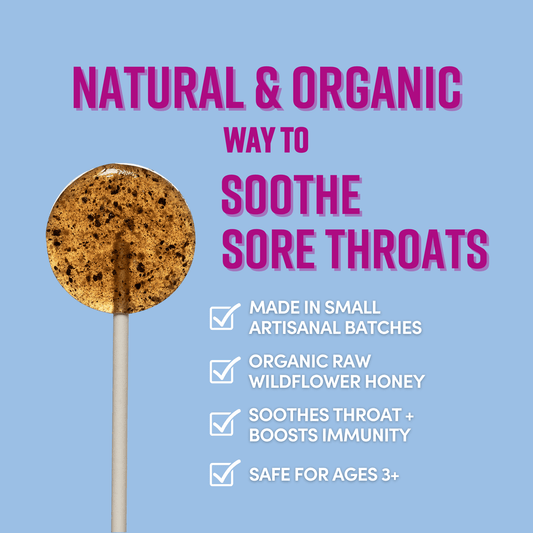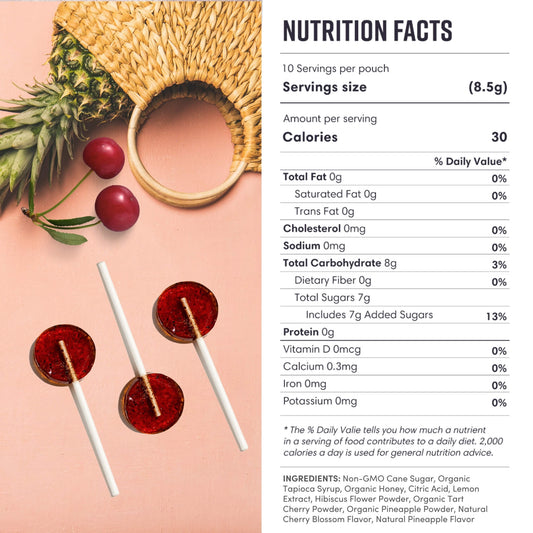In the world of sweets, lollipops have carved out their niche as a popular treat, particularly among children. While they come in an array of vibrant colors and flavors, questions about their health implications are increasingly common. This article aims to provide a thorough investigation into the nutritional value of lollipops, dissecting their ingredients, comparing them to other sweets, and discussing their impact on oral health.
Understanding the Ingredients of Lollipops
Consider the ingredients of lollipops to evaluate their healthiness. The typical lollipop consists of a few essential components that define not only its flavor but also its nutritional profile.
The Role of Sugar in Lollipops
At the core of most lollipops is sugar, usually in the form of sucrose or high fructose corn syrup. Sugar provides the characteristic sweetness that makes lollipops appealing. However, excessive sugar consumption is associated with several health concerns, including obesity and diabetes.
An average lollipop contains 5-10 grams of sugar, depending on its size and brand. While this amount is not significant in isolation, it can quickly add up if consumed in large quantities. Hence, moderation is key when it comes to enjoying sugary treats. Additionally, some brands are now exploring sugar alternatives, such as stevia or erythritol, which can provide sweetness without the same caloric impact. These alternatives may appeal to health-conscious consumers looking to indulge without guilt.
Artificial Flavors and Colors: What You Need to Know
Beyond sugar, many lollipops include artificial flavors and colors to enhance their appeal. While these additives can make lollipops more enticing, there are ongoing debates regarding their health implications. Some people may be sensitive to specific artificial ingredients, leading to allergic reactions or hyperactivity in children.
Consumers must read labels carefully. Natural flavorings and colors derived from fruits and vegetables are available and can be a healthier alternative. Thus, understanding the source and potential effects of these ingredients is essential when selecting lollipops. Moreover, the trend toward transparency in food labeling has prompted many manufacturers to reformulate their products, opting for more natural ingredients that align with consumer preferences for cleaner, more straightforward options. This shift not only caters to health-conscious individuals but also reflects a growing awareness of the environmental impact of synthetic additives.
Nutritional Breakdown of a Lollipop
To further understand if lollipops can fit into a healthy diet, let's examine their nutritional breakdown. Most lollipops offer minimal nutritional value, containing primarily carbohydrates, specifically sugars.
Calories and Macronutrients
A typical lollipop has about 30-50 calories. These calories predominantly come from sugars, making lollipops energy-dense but nutrient-poor. They do not provide significant amounts of proteins or fats, which are necessary for a balanced diet.
Here’s a quick overview of the macronutrients found in a standard lollipop:
-
Calories: 30-50
-
Carbohydrates: 8-13 grams
-
Protein: less than 1 gram
-
Fat: 0 grams
Vitamins and Minerals in Lollipops
When it comes to vitamins and minerals, lollipops are lacking. Most lollipops contain negligible amounts of essential nutrients. They typically do not provide significant levels of vitamins A, C, calcium, or iron. Instead, the focus remains on sweetness and taste rather than any health benefits.
Interestingly, some manufacturers have attempted to enhance the nutritional profile of lollipops by incorporating added vitamins or using natural fruit extracts. These variations may offer a slight improvement in nutritional value, but they still fall short of being considered healthy foods. Even with these enhancements, the primary ingredient remains sugar, which can contribute to dental issues and other health concerns when consumed excessively.
As a result, while lollipops may be enjoyed as an occasional treat, they should not be seen as a beneficial addition to one’s diet. Moderation and balance are essential when indulging in sugary snacks, as they can easily lead to cravings for more sweets. Understanding the implications of sugar consumption is crucial, especially for children, who may be more susceptible to the allure of these colorful confections.
Comparing Lollipops to Other Sweets
Understanding lollipops is also about context. How do they compare to other popular sweets? Comparing their nutritional value can help clarify their role in our diets.
Lollipops vs. Chocolate: A Nutritional Perspective
One frequent comparison is with chocolate, which many parents regard as a more indulgent option. A standard milk chocolate bar can contain significantly more calories and fat than a lollipop, often owing to its milk content.
However, chocolate also contains antioxidants from cocoa, which can offer some health benefits when consumed in moderation. Therefore, while lollipops may be lower in calories, chocolate can provide nutritional value that lollipops lack. Furthermore, the experience of eating chocolate often involves a more prosperous, creamier texture that can satisfy cravings in a way that lollipops, with their complex candy form, may not. This sensory difference can influence how people perceive their indulgence, making chocolate a go-to choice for those seeking comfort or a treat.
How Do Lollipops Stack Up Against Gummy Candies?
Gummy candies are another popular sweet, and they often have a nutritional profile that’s similar to lollipops. Both tend to be high in sugar and low in nutrients, but gummy candies often contain added gelatin, which can provide some protein. This highlights that while lollipops are a classic treat, they are not the only option nor necessarily the most nutritious.
In addition to their nutritional differences, gummy candies also come in a variety of shapes and flavors, appealing to a wide range of tastes and preferences. The chewiness of gummies can create a different sensory experience compared to the complex, long-lasting enjoyment of a lollipop. For many, the act of chewing gummy candies can be more satisfying, while others may prefer the slow savoring of a lollipop as it dissolves in the mouth. This distinction in texture and consumption can influence not just dietary choices but also the enjoyment factor associated with these sweets, making each a unique indulgence in its own right.
The Impact of Lollipops on Oral Health
One significant concern associated with lollipop consumption is its impact on oral health. Understanding these effects is vital for both children and adults who enjoy these sugary treats.
Lollipops and Tooth Decay
The high sugar content of lollipops directly contributes to the risk of tooth decay. When sugar interacts with the bacteria in the mouth, it forms an acid that erodes tooth enamel, leading to cavities. The sticky nature of lollipops allows them to cling to teeth longer, increasing this risk.
To mitigate dental issues, it's recommended to consume lollipops in moderation and maintain good oral hygiene practices, such as brushing your teeth after indulgence. Additionally, choosing lollipops that are sugar-free or contain xylitol can be a healthier alternative. Xylitol has been shown to inhibit the growth of cavity-causing bacteria, helping to satisfy a sweet craving while reducing the risk of dental problems.
The Link Between Lollipops and Oral Health Issues
Beyond tooth decay, lollipops can also be linked to other oral health issues, including gum disease. The frequent consumption of sugary foods can lead to plaque buildup, which is a precursor to gum inflammation.
Parents should monitor their children’s lollipop intake and emphasize the importance of dental care to avoid long-term health issues. Regular dental check-ups are crucial, as they can help catch early signs of decay or gum disease before they become more serious. Furthermore, educating children about the importance of rinsing their mouths with water after consuming sugary treats can be an effective strategy to minimize the harmful effects of sugar on their teeth.
Making Healthier Choices: Alternatives to Lollipops
For those concerned about lollipops' nutritional drawbacks, there are healthier alternatives that can satisfy a sweet tooth without the same level of sugar.
Fruit-Based Sweet Treats
Fruit-based lollipops or dried fruit can serve as a delicious and healthier option. These treats contain natural sugars and additional nutrients, such as vitamins and fiber, which contribute positively to one’s diet.
Options like fruit puree popsicles can provide the satisfaction of sweetness while offering additional health benefits, making them suitable for children and adults alike. Additionally, homemade fruit lollipops can be a fun and creative activity for families. By blending fresh fruits with yogurt or coconut water, you can customize flavors and even sneak in some greens, like spinach or kale, without compromising taste. This not only promotes healthier eating habits but also encourages kids to engage with their food playfully.
Sugar-Free Candy Options
Sugar-free candies, often made with sugar substitutes, are another alternative. These candies can provide the same sweet flavor without the high sugar content, appealing to those looking to cut down on their sugar intake.
However, it's essential to check the ingredients, as some sugar substitutes may cause digestive discomfort for specific individuals. Furthermore, exploring options like dark chocolate, which contains less sugar than traditional sweets and is rich in antioxidants, can also be a delightful treat. Pairing dark chocolate with nuts or dried fruits can create a satisfying snack that not only curbs cravings but also provides healthy fats and additional nutrients. This way, you can indulge your sweet tooth while still making mindful choices that benefit your overall health.
Conclusion
While lollipops are a fun and appealing treat, they have several nutritional drawbacks, primarily due to their high sugar content and lack of essential nutrients. When enjoyed in moderation, lollipops can be part of a balanced diet, but it’s crucial to remain aware of their potential impact on oral health and overall nutrition. By exploring alternatives such as those at Mama Bear Organics, individuals can satisfy their sweet cravings while making healthier choices that contribute positively to their well-being.










